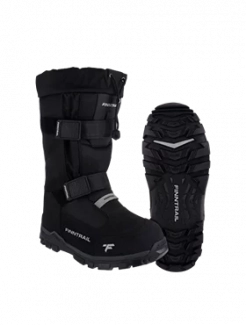How to Bring your Dead ATV Back to Life
A dead ATV can be heartbreaking. Although there are several reasons why an ATV might be dead, a dead battery is a common reason why an ATV is not coming to life.
Your ATV battery may have lost charge due to a few reasons, such as switching the lights on overnight and leaving the key in the "on" position in the ignition.
If your ATV is dead and you are wondering what might have gone wrong and how you can fix it, here is the ultimate guide.

Check the Gear
This can be a common mistake due to an oversight; check the gear before suspecting your ATV battery. Make sure it is in "Park" or 'Neutral." Some ATV models don't start until you put them into the right gear. You also want to check your owner's manual for the right gear to start your machine.
Battery Terminals: Bad battery terminals are a common cause of ATVs not starting. Hence, check the battery terminals and ensure they are not rusted and are connected properly.
Battery
Your battery might be the culprit behind your ATV's failure to come on. It might not be fully charged enough to switch on your ATV. Using a multimeter or a simple voltage tester, you can check if your battery has enough juice to start the engine.
Some ATV models feature an in-built voltage meter that reads the battery's charge. If your ATV battery reads below 11.5v, it isn't sufficiently charged to power up your ATV. The normal range is usually 12.6volts-12.8volts.
If your battery isn't sufficiently charged, you won't hear the clicking sound when you turn the key. Also, the motor only spins for a short time.
These are some simple ways to recharge your battery if it is dead:
Compression Start
The compression start is a simple trick involving giving your vehicle an extra push to switch it on. Turn the key to ON and set the machine to 2nd gear. Push the ATV with the clutch down.
After a few seconds, when the machine runs at about 5-7 mph, get in your ATV and release the clutch. These little tricks can boost your engine, giving it the little push it needs. Remember to push your clutch back in when the engine starts.
Desulfating
Leaving your machine idle for a long time can cause your battery to discharge. Desulfating works by removing the accumulated residue on the battery. You will need a glove for the procedure though.
Simply put on your gloves, disconnect the battery cables from the battery and pull it out of its compartment. Boil half a liter of water and add about 16 tablespoons of Epsom salt. Thoroughly mix the solution, remove the caps on the battery, and pour the solution on the battery.
Now, when it is dry, charge the battery.
When performing this procedure, ensure you are protected with safety goggles.
Jump Start Using an ATV or a Car
If the electrical potential in your ATV battery is between 11.5 and 12.4 volts, you can use an external battery charger to boost it. But if the voltage is below 11.5 volts, there is a higher probability of it not recharging.
With a jump starter, you can use an ATV or a car to jumpstart your battery.
-
Connect one end of the jump starter to the battery and the other to the car or ATV.
-
Start the ATV or car your battery is connected to, to boost your ATV's dead battery.
-
After some time, switch on your ATV and disconnect the jumper cables from the connected ports.
Note that if you are using a car to jumpstart your ATV, you shouldn't turn on the car. This way you keep the charging system from frying your four-wheeler’s electrical components. Also make sure you wear rubber shoes and gloves and always remove the positive terminals first before removing the negative terminals.








































